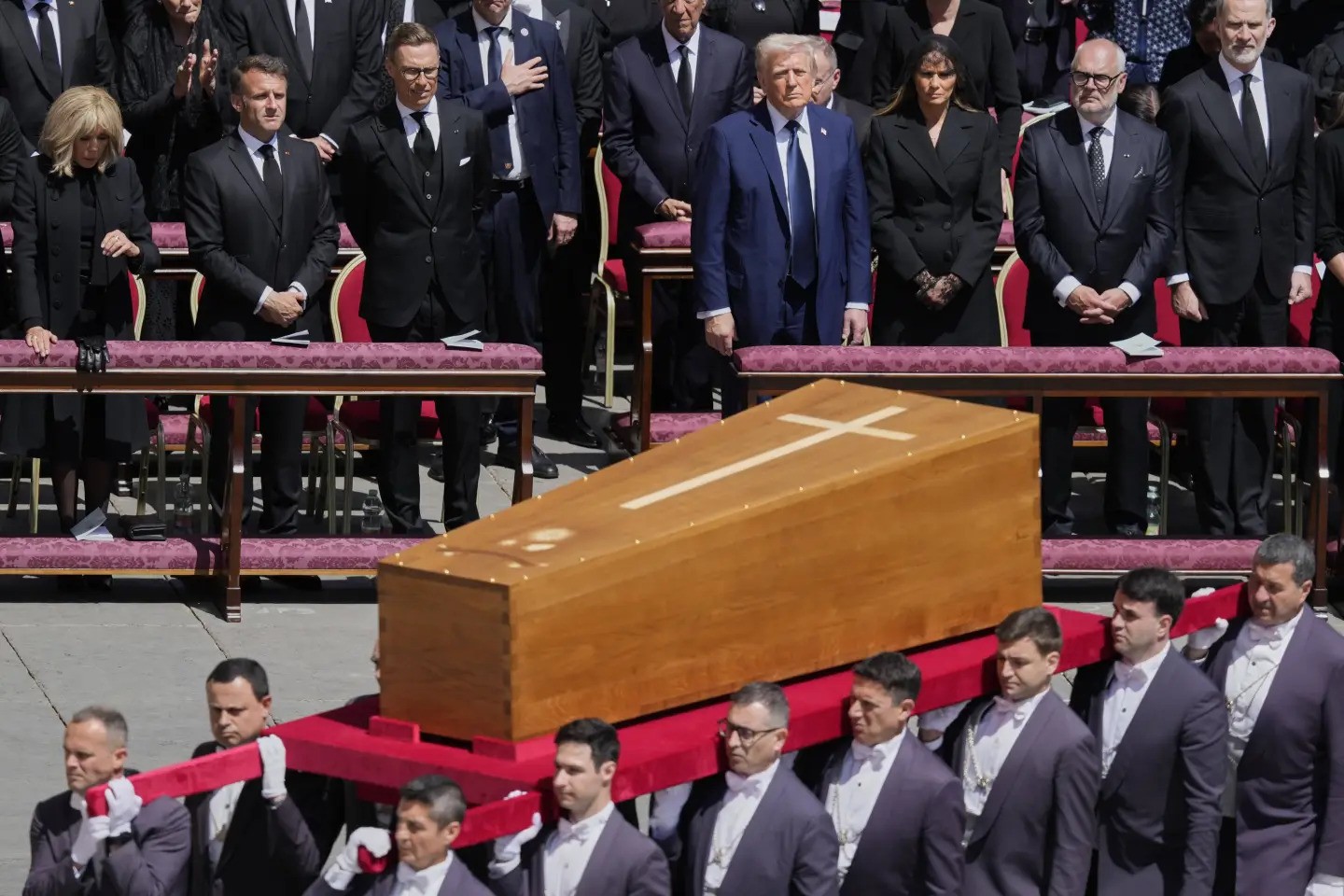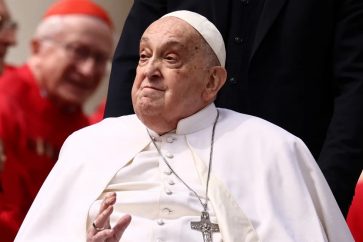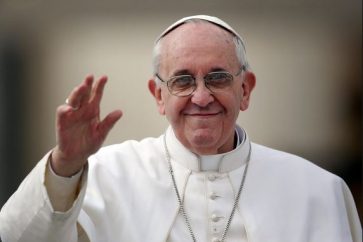Thousands gathered on Saturday to bid farewell to Pope Francis in a funeral ceremony attended by dozens of world leaders, reflecting the late pontiff’s lifelong commitment to the poor, the marginalized, and migrants.
The first South American pope, Francis, passed away last Monday at the age of 88, less than a month after being discharged from a Rome hospital where he was treated for severe pneumonia. Over the past three days, approximately 250,000 mourners visited the 16th-century Saint Peter’s Basilica to pay their final respects as his body lay in an open casket.
Renowned for his modesty during his papacy, Francis chose a simple funeral, rewriting traditional Vatican rites to reflect his preference for humility. While Pope John Paul II’s funeral in 2005 lasted three hours, Saturday’s ceremony concluded in just 90 minutes.
Pope Francis’ mortal remains are carried aboard the popemobile through the streets of Rome to their eternal resting place at the Basilica of St. Mary Major, and his coffin pauses for a final salute to the ancient icon of Mary Salus Populi Romani. pic.twitter.com/i7CameHuDQ
— Vatican News (@VaticanNews) April 26, 2025
Breaking with centuries-old tradition, Francis opted to forgo the triple-casket burial involving cypress wood, lead, and oak. Instead, his body was placed in a single zinc-lined wooden coffin, which was sealed Friday evening in preparation for the funeral.
Thousands of mourners flooded the Vatican from the early hours of Saturday, with many arriving overnight to secure spots near the front. When access to St. Peter’s Square opened shortly after 6 a.m. local time, crowds surged forward, waving national flags and portraits of the “Pope of the Poor.”
Heightened Security Measures
Italian and Vatican authorities imposed tight security around St. Peter’s Basilica, deploying thousands of volunteers, police forces, a drone defense system, rooftop snipers, and fighter jets on standby.
Additional forces, including anti-aircraft missile units and patrol boats, were mobilized for one of Italy’s largest-ever security operations.
The open-air funeral was attended by 220 cardinals, 750 bishops, and more than 4,000 priests, lasting about 90 minutes.
Over 160 delegations participated, including heads of state, government leaders, and royalty, among them US President Donald Trump—who had clashed with Pope Francis over immigration.
The Lebanese president and the first lady pay their final respects to Pope Francis, lying in state at St. Peter’s Basilica in the Vatican.
رئيس الجمهورية واللبنانية الأولى، ألقيا النظرة الأخيرة على جثمان البابا فرنسيس المسجّى في كاتدرائية القديس بطرس في الفاتيكان pic.twitter.com/P9ZbR7TwSy
— Lebanese Presidency (@LBpresidency) April 25, 2025
Other mourners included former president Joe Biden, UN Secretary-General António Guterres, French President Emmanuel Macron, German Chancellor Olaf Scholz, and British Prime Minister Keir Starmer.
Russian President Vladimir Putin, subject to an International Criminal Court arrest warrant, was represented by Culture Minister Olga Lyubimova.
From South America, Argentine President Javier Milei and Brazilian President Luiz Inácio Lula da Silva were present.
Royal attendees included King Philippe and Queen Mathilde of Belgium, King Felipe VI and Queen Letizia of Spain, King Abdullah II and Queen Rania of Jordan, and Prince Albert II and Princess Charlene of Monaco.
Private Burial Ceremony
Following the funeral Mass led by Cardinal Giovanni Battista, the coffin of Pope Francis was carried through the streets to the Basilica of Santa Maria Maggiore in central Rome. The late pontiff had chosen this majestic fifth-century church, which already holds the remains of seven previous popes, as his final resting place.
A group of poor, imprisoned, and migrant individuals — groups Pope Francis championed throughout his 12-year papacy — attended the special burial ceremony. Known for siding with the marginalized and confronting wealthy nations to defend migrants, Pope Francis remained true to his mission until the end.
The Vatican announced a nine-day mourning period beginning Saturday. During this time, daily solemn ceremonies will be held at St. Peter’s Basilica, culminating on Sunday, May 4.
Attention Turns to the Next Pope
Following the funeral, focus now shifts to the College of Cardinals. A total of 135 cardinal-electors under the age of 80 are expected to meet in closed sessions to elect Pope Francis’s successor.
While the official date for the start of the conclave has not yet been confirmed, Cardinal Jean-Claude Hollerich of Luxembourg, a Jesuit and close advisor to Francis, suggested the process could begin on May 5 or 6.
Cardinals, who have already started arriving from around the world, will gather in the Sistine Chapel and hold four voting sessions per day — two in the morning and two in the afternoon — until a new pope is chosen.
Source: Al-Manar Website




